Mobility training for increasing mobility and functioning in older people with frailty
- PMID: 35771806
- PMCID: PMC9245897
- DOI: 10.1002/14651858.CD010494.pub2
Mobility training for increasing mobility and functioning in older people with frailty
Abstract
Background: Frailty is common in older people and is characterised by decline across multiple body systems, causing decreased physiological reserve and increased vulnerability to adverse health outcomes. It is estimated that 21% of the community-dwelling population over 65 years are frail. Frailty is independently predictive of falls, worsening mobility, deteriorating functioning, impaired activities of daily living, and death. The World Health Organization's International Classification of Functioning, Disability and Health (ICF) defines mobility as: changing and maintaining a body position, walking, and moving. Common interventions used to increase mobility include functional exercises, such as sit-to-stand, walking, or stepping practice.
Objectives: To summarise the evidence for the benefits and safety of mobility training on overall functioning and mobility in frail older people living in the community.
Search methods: We searched CENTRAL, MEDLINE, Embase, AMED, PEDro, US National Institutes of Health Ongoing Trials Register, and the World Health Organization International Clinical Trials Registry Platform (June 2021).
Selection criteria: We included randomised controlled trials (RCTs) evaluating the effects of mobility training on mobility and function in frail people aged 65+ years living in the community. We defined community as those residing either at home or in places that do not provide rehabilitative services or residential health-related care, for example, retirement villages, sheltered housing, or hostels. DATA COLLECTION AND ANALYSIS: We undertook an 'umbrella' comparison of all types of mobility training versus control.
Main results: This review included 12 RCTs, with 1317 participants, carried out in 9 countries. The median number of participants in the trials was 97. The mean age of the included participants was 82 years. The majority of trials had unclear or high risk of bias for one or more items. All trials compared mobility training with a control intervention (defined as one that is not thought to improve mobility, such as general health education, social visits, very gentle exercise, or "sham" exercise not expected to impact on mobility). High-certainty evidence showed that mobility training improves the level of mobility upon completion of the intervention period. The mean mobility score was 4.69 in the control group, and with mobility training, this score improved by 1.00 point (95% confidence interval (CI) 0.51 to 1.51) on the Short Physical Performance Battery (on a scale of 0 to 12; higher scores indicate better mobility levels) (12 studies, 1151 participants). This is a clinically significant change (minimum clinically important difference: 0.5 points; absolute improvement of 8% (4% higher to 13% higher); number needed to treat for an additional beneficial outcome (NNTB) 5 (95% CI 3.00 to 9.00)). This benefit was maintained at six months post-intervention. Moderate-certainty evidence (downgraded for inconsistency) showed that mobility training likely improves the level of functioning upon completion of the intervention. The mean function score was 86.1 in the control group, and with mobility training, this score improved by 8.58 points (95% CI 3.00 to 14.30) on the Barthel Index (on a scale of 0 to 100; higher scores indicate better functioning levels) (9 studies, 916 participants) (absolute improvement of 9% (3% higher to 14% higher)). This result did not reach clinical significance (9.8 points). This benefit did not appear to be maintained six months after the intervention. We are uncertain of the effect of mobility training on adverse events as we assessed the certainty of the evidence as very low (downgraded one level for imprecision and two levels for bias). The number of events was 771 per 1000 in the control group and 562 per 1000 in the group with mobility training (risk ratio (RR) 0.74, 95% CI 0.63 to 0.88; 2 studies, 225 participants) (absolute difference of 19% fewer (9% fewer to 26% fewer)). Mobility training may result in little to no difference in the number of people who are admitted to nursing care facilities at the end of the intervention period as the 95% confidence interval includes the possibility of both a reduced and increased number of admissions to nursing care facilities (low-certainty evidence, downgraded for imprecision and bias). The number of events was 248 per 1000 in the control group and 208 per 1000 in the group with mobility training (RR 0.84, 95% CI 0.53 to 1.34; 1 study, 241 participants) (absolute difference of 4% fewer (8% more to 12% fewer)). Mobility training may result in little to no difference in the number of people who fall as the 95% confidence interval includes the possibility of both a reduced and increased number of fallers (low-certainty evidence, downgraded for imprecision and study design limitations). The number of events was 573 per 1000 in the control group and 584 per 1000 in the group with mobility training (RR 1.02, 95% CI 0.87 to 1.20; 2 studies, 425 participants) (absolute improvement of 1% (12% more to 7% fewer)). Mobility training probably results in little to no difference in the death rate at the end of the intervention period as the 95% confidence interval includes the possibility of both a reduced and increased death rate (moderate-certainty evidence, downgraded for bias). The number of events was 51 per 1000 in the control group and 59 per 1000 in the group with mobility training (RR 1.16, 95% CI 0.64 to 2.10; 6 studies, 747 participants) (absolute improvement of 1% (6% more to 2% fewer)).
Authors' conclusions: The data in the review supports the use of mobility training for improving mobility in a frail community-dwelling older population. High-certainty evidence shows that compared to control, mobility training improves the level of mobility, and moderate-certainty evidence shows it may improve the level of functioning in frail community-dwelling older people. There is moderate-certainty evidence that the improvement in mobility continues six months post-intervention. Mobility training may make little to no difference to the number of people who fall or are admitted to nursing care facilities, or to the death rate. We are unsure of the effect on adverse events as the certainty of evidence was very low.
Copyright © 2022 The Cochrane Collaboration. Published by John Wiley & Sons, Ltd.
Conflict of interest statement
DT: has declared that they have no conflict of interest. LH: has declared that they have no conflict of interest. KS: I teach two‐ and three‐day workshops for physiotherapists and occupational therapists for which I am paid a fee by various health services and individuals. NF: has declared that they have no conflict of interest. IC: has declared that they have no conflict of interest. CS: has declared that they have no conflict of interest. NF, IC, and CS were authors of the included study Fairhall 2012. These authors did not review this study.
Figures
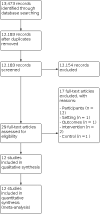

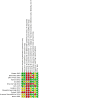



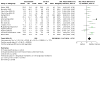



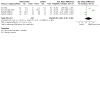


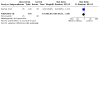
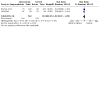


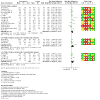

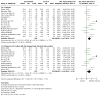
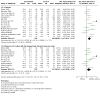
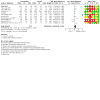
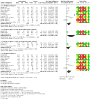
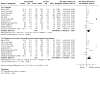

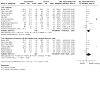
Update of
- doi: 10.1002/14651858.CD010494
Similar articles
-
Interventions for preventing falls in older people in care facilities.Cochrane Database Syst Rev. 2025 Aug 20;8(8):CD016064. doi: 10.1002/14651858.CD016064. Cochrane Database Syst Rev. 2025. PMID: 40832852 Free PMC article. Review.
-
Multidisciplinary rehabilitation for older people with hip fractures.Cochrane Database Syst Rev. 2021 Nov 12;11(11):CD007125. doi: 10.1002/14651858.CD007125.pub3. Cochrane Database Syst Rev. 2021. PMID: 34766330 Free PMC article.
-
Interventions for improving mobility after hip fracture surgery in adults.Cochrane Database Syst Rev. 2022 Sep 7;9(9):CD001704. doi: 10.1002/14651858.CD001704.pub5. Cochrane Database Syst Rev. 2022. PMID: 36070134 Free PMC article.
-
Interventions for preventing and reducing the use of physical restraints for older people in all long-term care settings.Cochrane Database Syst Rev. 2023 Jul 28;7(7):CD007546. doi: 10.1002/14651858.CD007546.pub3. Cochrane Database Syst Rev. 2023. PMID: 37500094 Free PMC article.
-
Exercise for acutely hospitalised older medical patients.Cochrane Database Syst Rev. 2022 Nov 10;11(11):CD005955. doi: 10.1002/14651858.CD005955.pub3. Cochrane Database Syst Rev. 2022. PMID: 36355032 Free PMC article.
Cited by
-
Implementing Aging in Place in Hong Kong: Meeting the Needs and Aspirations of Older Adults and Their Caregivers Living in Private Housing.Int J Environ Res Public Health. 2024 Mar 14;21(3):348. doi: 10.3390/ijerph21030348. Int J Environ Res Public Health. 2024. PMID: 38541347 Free PMC article.
-
Smoothness Evaluation Indices during Sit-to-Stand-to-Sit Motions in Healthy Older Females and after Hip Fracture Using an Accelerometer: A Pilot Study.Geriatrics (Basel). 2023 Oct 1;8(5):98. doi: 10.3390/geriatrics8050098. Geriatrics (Basel). 2023. PMID: 37887971 Free PMC article.
-
Multicomponent telerehabilitation program for veterans with multimorbidity: A randomized controlled feasibility study.PM R. 2025 May;17(5):548-562. doi: 10.1002/pmrj.13299. Epub 2025 Jan 8. PM R. 2025. PMID: 39777862 Clinical Trial.
-
Exercise in the Prevention of Age-Related Fragility Fractures (Narrative Review).Gerontology. 2025;71(3):173-184. doi: 10.1159/000543377. Epub 2025 Jan 17. Gerontology. 2025. PMID: 40552860 Free PMC article. Review.
-
Around the EQUATOR With Clin-STAR: Systematic Reviews of Intervention Effectiveness; Challenges and Opportunities.J Am Geriatr Soc. 2025 Aug;73(8):2356-2365. doi: 10.1111/jgs.19498. Epub 2025 May 2. J Am Geriatr Soc. 2025. PMID: 40317982 Free PMC article.
References
References to studies included in this review
Binder 2002 {published data only}
-
- Binder EF, Schechtman KB, Ehsani AA, Steger-May K, Brown M, Sinacore DR, et al. Effects of exercise training on frailty in community-dwelling older adults: results of a randomized, controlled trial. Journal of the American Geriatrics Society 2002;50(12):1921-8. - PubMed
-
- Brown M, Sinacore DR, Ehsani AA, Binder EF, Holloszy JO, Kohrt WM. Low-intensity exercise as a modifier of physical frailty in older adults. Archives of Physical Medicine and Rehabilitation 2000;81(7):960-5. - PubMed
Bonnefoy 2003 {published data only}
-
- Bonnefoy M, Cornu C, Normand S, Boutitie F, Bugnard F, Rahmani A, et al. The effects of exercise and protein-energy supplements on body composition and muscle function in frail elderly individuals: a long-term controlled randomised study. British Journal of Nutrition 2003;89(5):731-9. - PubMed
-
- Normand S. Clarification of study design [personal communication]. Email to: Daniel Treacy 17 April 2018.
Chin A Paw 2002 {published and unpublished data}
-
- Chin A Paw MJ, De Jong N, Schouten EG, Hiddink GJ, Kok FJ. Physical exercise and/or enriched foods for functional improvement in frail, independently living elderly: a randomized controlled trial. Archives of Physical Medicine and Rehabilitation 2001;82(6):811-7. - PubMed
-
- Chin A Paw MJ. Additional outcome data [personal communication]. Email to: Daniel Treacy 8 January 2019.
Fairhall 2012 {published data only}
-
- Fairhall N, Sherrington C, Kurrle SE, Lord SR, Lockwood K, Howard K, et al. Economic evaluation of a multifactorial, interdisciplinary intervention versus usual care to reduce frailty in frail older people. Journal of the American Medical Directors Association 2015;16(1):41-8. - PubMed
-
- Fairhall N, Sherrington C, Lord SR, Kurrle SE, Langron C, Lockwood K, et al. Effect of a multifactorial, interdisciplinary intervention on risk factors for falls and fall rate in frail older people: a randomised controlled trial. Age and Ageing 2014;43(5):616-22. - PubMed
Gill 2004 {published data only}
-
- Gill TM, Baker DI, Gottschalk M, Gahbauer EA, Charpentier PA, De Regt PT, et al. A prehabilitation program for physically frail community-living older persons. Archives of Physical Medicine and Rehabilitation 2003;84(3):394-404. - PubMed
-
- Gill TM, Baker DI, Gottschalk M, Peduzzi PN, Allore H, Byers A. A program to prevent functional decline in physically frail, elderly persons who live at home. New England Journal of Medicine 2002;347(14):1068-74. - PubMed
-
- Gill TM, Baker DI, Gottschalk M, Peduzzi PN, Allore H, Van Ness PH. A prehabilitation program for the prevention of functional decline: effect on higher-level physical function. Archives of Physical Medicine and Rehabilitation 2004;85(7):1043-9. - PubMed
-
- Gill TM, McGloin JM, Gahbauer EA, Shepard DM, Bianco LM. Two recruitment strategies for a clinical trial of physically frail community-living older persons. Journal of the American Geriatrics Society 2001;49(8):1039-45. - PubMed
Gine‐Garriga 2010 {published data only}
-
- Gine-Garriga M, Guerra M, Pages E, Manini TM, Jimenez R, Unnithan VB. The effect of functional circuit training on physical frailty in frail older adults: a randomized controlled trial. Journal of Aging and Physical Activity 2010;18(4):401-24. - PubMed
-
- Gine-Garriga M, Guerra M, Unnithan VB. The effect of functional circuit training on self-reported fear of falling and health status in a group of physically frail older individuals: a randomized controlled trial. Aging Clinical and Experimental Research 2013;25(3):329-36. - PubMed
Kim 2015 {published data only}
-
- Kim H, Suzuki T, Kim M, Kojima N, Ota N, Shimotoyodome A, et al. Effects of exercise and milk fat globule membrane (MFGM) supplementation on body composition, physical function, and hematological parameters in community-dwelling frail Japanese women: a randomized double blind, placebo-controlled, follow-up trial. PLoS One 2015;10(2):e0116256. - PMC - PubMed
Langlois 2013 {published and unpublished data}
-
- Desjardins L. Additional outcome data [personal communication]. Email to: Daniel Treacy 2 June 2018.
-
- Langlois F, Vu TT, Chasse K, Dupuis G, Kergoat MJ, Bherer L. Benefits of physical exercise training on cognition and quality of life in frail older adults. Journals of Gerontology Series B: Psychological Sciences and Social Sciences 2013;68(3):400-4. - PubMed
Mugueta‐Aguinaga 2017 {published data only}
Rydwik 2008 {published and unpublished data}
-
- Rydwik E, Frandin K, Akner G. Effects of a physical training and nutritional intervention program in frail elderly people regarding habitual physical activity level and activities of daily living - a randomized controlled pilot study. Archives of Gerontology and Geriatrics 2010;51(3):283-9. - PubMed
-
- Rydwik E, Gustafsson T, Frandin K, Akner G. Effects of physical training on aerobic capacity in frail elderly people (75+ years). Influence of lung capacity, cardiovascular disease and medical drug treatment: a randomized controlled pilot trial. Aging Clinical and Experimental Research 2010;22(1):85-94. - PubMed
-
- Rydwik E, Lammes E, Frandin K, Akner G. Effects of a physical and nutritional intervention program for frail elderly people over age 75. A randomized controlled pilot treatment trial. Aging Clinical and Experimental Research 2008;20(2):159-70. - PubMed
-
- Rydwik E. Additional outcome data [personal communication]. Email to: Daniel Treacy 16 January 2019.
Tarazona‐Santabalbina 2016 {published data only}
-
- Tarazona-Santabalbina FJ, Gomez-Cabrera MC, Perez-Ros P, Martinez-Arnau FM, Cabo H, Tsaparas K, et al. A multicomponent exercise intervention that reverses frailty and improves cognition, emotion, and social networking in the community-dwelling frail elderly: a randomized clinical trial. Journal of the American Medical Directors Association 2016;17(5):426-33. - PubMed
Worm 2001 {published data only}
-
- Worm CH, Vad E, Puggaard L, Stovring H, Lauritsen J, Kragstrup J. Effects of a multicomponent exercise program on functional ability in community-dwelling, frail older adults. Journal of Aging and Physical Activity 2001;9(4):414-24.
References to studies excluded from this review
Beling 2009 {published data only}
-
- Beling J, Roller M. Multifactorial intervention with balance training as a core component among fall-prone older adults. Journal of Geriatric Physical Therapy 2009;32(3):125-33. - PubMed
Binder 2005 {published data only}
-
- Binder E F, Yarasheski K E, Steger-May K, Sinacore D R, Brown M, Schechtman K B, et al. Effects of progressive resistance training on body composition in frail older adults: results of a randomized, controlled trial. Journals of Gerontology Series A: Biological Sciences and Medical Sciences 2005;60(11):1425-31. - PubMed
Clegg 2014 {published data only}
De Vries 2015 {published data only}
-
- De Vries NM, Staal JB, Van Der Wees PJ, Akkermans R, Adang E, Olde Rikkert MGM, et al. Personalized physiotherapy in frail older adults with mobility problems is (cost)-effective in improving physical activity and frailty: a RCT. Physiotherapy (United Kingdom) 2015;101:eS1089-90.
Faber 2006 {published data only}
-
- Faber MJ, Bosscher RJ, Chin A Paw MJ, Van Wieringen PC. Effects of exercise programs on falls and mobility in frail and pre-frail older adults: a multicenter randomized controlled trial. Archives of Physical Medicine and Rehabilitation 2006;87(7):885-96. - PubMed
Halvarsson 2013 {published data only}
-
- Halvarsson A, Franzen E, Faren E, Olsson E, Oddsson L, Stahle A. Long-term effects of new progressive group balance training for elderly people with increased risk of falling - a randomized controlled trial. Clinical Rehabilitation 2013;27(5):450-8. - PubMed
Hiroyuki 2003 {published data only}
-
- Hiroyuki S, Uchiyama Y, Kakurai S. Specific effects of balance and gait exercises on physical function among the frail elderly. Clinical Rehabilitation 2003;17(5):472-9. - PubMed
Ikezoe 2005 {published data only}
-
- Ikezoe T, Tsutou A, Asakawa Y, Tsuboyama T. Low intensity training for frail elderly women: long-term effects on motor function and mobility. Journal of Physical Therapy Science 2005;17(1):43-9.
Latham 2003 {published data only}
-
- Latham NK, Anderson CS, Lee A, Bennett DA, Moseley A, Cameron ID, et al. A randomized, controlled trial of quadriceps resistance exercise and vitamin D in frail older people: the Frailty Interventions Trial in Elderly Subjects (FITNESS). Journal of the American Geriatrics Society 2003;51(3):291-9. - PubMed
Law 2018 {published data only}
-
- Law H, Bte Ismail N, Wong W, Ramason R, Kua J, Natesan S. Targeting falls through frailty intervention by a combined nutritional intervention and physical exercise programme in community-dwelling older fallers: a pilot randomized clinical trial. Journal of the American Geriatrics Society 2018;66(S2):S128.
Lord 2003 {published data only}
-
- Lord S R, Castell S, Corcoran J, Dayhew J, Matters B, Shan A, et al. The effect of group exercise on physical functioning and falls in frail older people living in retirement villages: a randomized, controlled trial. Journal of the American Geriatrics Society 2003;51(12):1685-92. - PubMed
Ng 2014 {published data only}
-
- Ng TP, Lim LM, Niti M, Nyunt MSZ, Feng L, Gwee X, et al. Effects of nutritional, physical, cognitive interventions on cognitive outcomes in the Singapore frailty intervention trial (S-FIT). Annals of the Academy of Medicine Singapore 2014;1:S68-9.
Pahor 2014 {published data only}
Park 2012 {published data only}
-
- Park YI, Lee KY, Kim TI, Jeon MH, Kim DO, Kim JH. The effects of exercise in the frail elderly. Journal of Korean Academy of Community Health Nursing 2012;23(1):91-101.
Salem 2017 {published data only}
Seino 2017 {published data only}
-
- Seino S, Nishi M, Murayama H, Narita M, Yokoyama Y, Nofuji Y, et al. Effects of a multifactorial intervention comprising resistance exercise, nutritional and psychosocial programs on frailty and functional health in community-dwelling older adults: a randomized, controlled, cross-over trial. Geriatrics & Gerontology International 2017;17(11):2034-45. - PubMed
Additional references
Allen 2011
-
- Allen NE, Sherrington C, Paul SS, Canning CG. Balance and falls in Parkinson's disease: a meta-analysis of the effect of exercise and motor training. Movement Disorders 2011;26(9):1605-15. [PMID: ] - PubMed
Ashworth 2005
Binder 2002
-
- Binder EF, Schechtman KB, Ehsani AA, Steger-May K, Brown M, Sinacore DR, et al. Effects of exercise training on frailty in community-dwelling older adults: results of a randomized, controlled trial. Journal of the American Geriatrics Society 2002;50(12):1921-8. - PubMed
Binder 2004
-
- Binder EF, Brown M, Sinacore DR, Steger-May K, Yarasheski KE, Schechtman KB. Effects of extended outpatient rehabilitation after hip fracture: a randomized controlled trial. Journal of the American Medical Association 2004;292(7):837-46. - PubMed
Cameron 2018
Cates 2008 [Computer program]
-
- Visual Rx. Cates C, Version 3. Dr. Christopher Cates EBM website. Available at www.nntonline.net, 2008.
Cations 2017
-
- Cations M, Laver KE, Crotty M, Cameron ID. Rehabilitation in dementia care. Age and Ageing 2017;47(2):171-74. - PubMed
Chin 2001
-
- Chin A Paw MJ, De Jong N, Schouten EG, Hiddink GJ, Kok FJ. Physical exercise and/or enriched foods for functional improvement in frail, independently living elderly: a randomized controlled trial. Archives of Physical Medicine and Rehabilitation 2001;82(6):811-7. - PubMed
Chou 2012
-
- Chou CH, Hwang CL, Wu YT. Effect of exercise on physical function, daily living activities, and quality of life in the frail older adults: a meta-analysis. Archives of Physical Medicine and Rehabilitation 2012;93:237-44. - PubMed
Clegg 2013
Clegg 2014
Daniels 2008
Deeks 2020
-
- Deeks JJ, Higgins JP, Altman DG. Chapter 10: Analysing data and undertaking meta-analyses. In: Higgins JP, Thomas J, Chandler J, Cumpston M, Li T, Page MJ, Welch VA, editor(s). Cochrane Handbook for Systematic Reviews of Interventions Version 6.1 (updated September 2020). Cochrane, 2020. Available from www.training.cochrane.org/handbook.
De Morton 2007
Dent 2017
-
- Dent E, Kowal P, Hoogendijk EO. Frailty measurement in research and clinical practice: a review. European Journal of Internal Medicine 2016;31:3-10. - PubMed
Dent 2019
Fairhall 2013
Fiatarone 1994
-
- Fiatarone MA, O'Neill EF, Ryan ND, Clements KM, Solares GR, Nelson ME, et al. Exercise training and nutritional supplementation for physical frailty in very elderly people. New England Journal of Medicine 1994;330(25):1769-75. - PubMed
Fried 2001
-
- Fried LP, Tangen CM, Walston J, Newman AB, Hirsch C, Gottdiener J, et al. Frailty in older adults: evidence for a phenotype. Journals of Gerontology Series A: Biological Sciences and Medical Sciences 2001;56(3):M146-56. - PubMed
Fried 2004
-
- Fried LP, Ferrucci L, Darer J, Williamson JD, Anderson G. Untangling the concepts of disability, frailty, and comorbidity: implications for improved targeting and care. Journals of Gerontology Series A: Biological Sciences and Medical Sciences 2004;59(3):255-63. - PubMed
Gill 1995
-
- Gill TM, Williams CS, Tinetti ME. Assessing risk for the onset of functional dependence among older adults: the role of physical performance. Journal of the American Geriatrics Society 1995;43(6):603-9. - PubMed
Gill 2002
-
- Gill TM, Baker DI, Gottschalk M, Peduzzi PN, Allore H, Byers A. A program to prevent functional decline in physically frail, elderly persons who live at home. New England Journal of Medicine 2002;347(14):1068-74. - PubMed
Gill 2004
-
- Gill TM, Allore HG, Holford TR, Guo Z. Hospitalization, restricted activity, and the development of disability among older persons. JAMA 2004;292(17):2115-24. - PubMed
Gill 2006
-
- Gill TM, Gahbauer EA, Allore HG, Han L. Transitions between frailty states among community-living older persons. Archives of Internal Medicine 2006;166(4):418-23. - PubMed
Gine‐Garriga 2014
-
- Gine-Garriga M, Roque-Fıguls M, Coll-Planas L, Sitja-Rabert M, Salva A. Physical exercise interventions for improving performance-based measures of physical function in community-dwelling, frail older adults: a systematic review and meta-analysis. Archives of Physical Medicine and Rehabilitation 2014;95:753-69. - PubMed
GRADEpro GDT [Computer program]
-
- GRADEpro GDT. Version accessed 6 August 2021. Hamilton (ON): McMaster University (developed by Evidence Prime). Available at gradepro.org.
Higgins 2020
-
- Higgins JP, Savović J, Page MJ, Elbers RG, Sterne JAC. Chapter 8: Assessing risk of bias in a randomized trial. In: Higgins JP, Thomas J, Chandler J, Cumpston M, Li T, Page MJ, Welch VA, editor(s). Cochrane Handbook for Systematic Reviews of Interventions Version 6.1 (updated September 2020). Cochrane, 2020. Available from training.cochrane.org/handbook.
Higgins 2020a
-
- Higgins JP, Li T, Deeks JJ. Chapter 6: Choosing effect measures and computing estimates of effect. In: Higgins JP, Thomas J, Chandler J, Cumpston M, Li T, Page MJ, Welch VA, editor(s). Cochrane Handbook for Systematic Reviews of Interventions Version 6.1 (updated September 2020). Cochrane, 2020. Available from training.cochrane.org/handbook .
Hopewell 2020
-
- Hopewell S, Copsey B, Nicolson P, Adedire B, Boniface G, Lamb S. Multifactorial interventions for preventing falls in older people living in the community: a systematic review and meta-analysis of 41 trials and almost 20 000 participants. British Journal of Sports Medicine 2020;54(22):1340-50. - PMC - PubMed
Howe 1997
-
- Howe A. Health care costs of an aging population: the case of Australia. Reviews in Clinical Gerontology 1997;7:359-65.
Howe 2011
Hozo 2005
Hubbard 2009
Keeble 2019
Lamb 2007
-
- Lamb SE, Hauer K, Becker C. Manual for the fall prevention classification system. www.profane.eu.org/documents/Falls_Taxonomy.pdf (accessed 18 July 2021).
Lamb 2011
Laver 2020
Liu 2009
Mitnitski 2001
Mitnitski 2004
-
- Mitnitski AB, Song X, Rockwood K. The estimation of relative fitness and frailty in community-dwelling older adults using self-report data. Journals of Gerontology Series A: Biological Sciences and Medical Sciences 2004;59(6):M627-32. - PubMed
Ofori‐Asenso 2019
Page 2020
-
- Page MJ, Higgins JP, Sterne JAC. Chapter 13: Assessing risk of bias due to missing results in a synthesis. In: Higgins JP, Thomas J, Chandler J, Cumpston M, Li T, Page MJ, Welch VA, editor(s). Cochrane Handbook for Systematic Reviews of Interventions Version 6.1 (updated September 2020). Cochrane, 2020. Available from training.cochrane.org/handbook.
Pel‐Littel 2009
-
- Pel-Littel RE, Schuurmans MJ, Emmelot-Vonk MH, Verhaar HJ. Frailty: defining and measuring of a concept. Journal of Nutrition, Health and Aging 2009;13(4):390-4. - PubMed
Perera 2006
-
- Perera S, Moody SH, Woodman RC, Studenski A. Meaningful change and responsiveness in common physical performance measures in older adults. Journal of the American Geriatrics Society 2006;54(4):743-9. - PubMed
Ridda 2008
-
- Ridda I, Lindley R, MacIntyre RC. The challenges of clinical trials in the exclusion zone: the case of the frail elderly. Australasian Journal on Ageing 2008;27(2):61-6. - PubMed
Rockwood 2005
Rolfson 2006
Rydwik 2004
-
- Rydwik E, Frandin K, Akner G. Effects of physical training on physical performance in institutionalised elderly patients (70+) with multiple diagnoses. Age and Ageing 2004;33(1):13-23. - PubMed
Schünemann 2020
-
- Schünemann HJ, Higgins JP, Vist GE, Glasziou P, Akl EA, Skoetz N, et al. Chapter 14: Completing ‘Summary of findings’ tables and grading the certainty of the evidence. In: Higgins JP, Thomas J, Chandler J, Cumpston M, Li T, Page MJ, Welch VA, editor(s). Cochrane Handbook for Systematic Reviews of Interventions Version 6.1 (updated September 2020). Cochrane, 2020. Available from training.cochrane.org/handbook.
Schünemann 2020a
-
- Schünemann HJ, Vist GE, Higgins JP, Santesso N, Deeks JJ, Glasziou P, et al. Chapter 15: Interpreting results and drawing conclusions. In: Higgins JP, Thomas J, Chandler J, Cumpston M, Li T, Page MJ, Welch VA, editor(s). Cochrane Handbook for Systematic Reviews of Interventions Version 6.1 (updated September 2020). Cochrane, 2020. Available from training.cochrane.org/handbook.
Sherrington 2019
Thompson 2018
-
- Thompson MQ, Theou O, Karnon J, Adams RJ, Visvanathan R. Frailty prevalence in Australia: findings from four pooled Australian cohort studies. Australasian Journal on Ageing 2018;37(2):155-8. - PubMed
Tinetti 1988
-
- Tinetti ME, Speechley M, Ginter SF. Risk factors for falls among elderly persons living in the community. New England Journal of Medicine 1988;319(26):1701-7. - PubMed
Treacy 2018
-
- Treacy D, Hassett L. The Short Physical Performance Battery. Journal of Physiotherapy 2018;64(1):61. - PubMed
Tricco 2017
Unnanuntana 2018
-
- Unnanuntana A, Jarusriwanna A, Nepal S. Validity and responsiveness of Barthel Index for measuring functional recovery after hemiarthroplasty for femoral neck fracture. Archives of Orthopaedic and Trauma Surgery 2018;138(12):1671-7. - PubMed
WHO 2001
-
- World Health Organization. International Classification of Functioning, Disability and Health. apps.who.int/iris/bitstream/handle/10665/42407/9241545429.pdf?sequence=1 (accessed 30 August 2021).
WHO 2010
-
- World Health Organization. International Statistical Classification of Diseases and Related Health Problems 10th Revision. apps.who.int/classifications/apps/icd/icd10online/ (accessed 30 August 2021).
Woo 2012
-
- Woo J, Leung J, Morley JE. Comparison of frailty indicators based on clinical phenotype and the multiple deficit approach in predicting mortality and physical limitation. Journal of the American Geriatrics Society 2012;60(8):1478-86. - PubMed
Woolford 2020
Worm 2001
-
- Worm CH, Vad E, Puggaard L, Stovring H, Lauritsen J, Kragstrup J. Effects of a multicomponent exercise program on functional ability in community-dwelling, frail older adults. Journal of Aging and Physical Activity 2001;9(4):414-24.
Publication types
MeSH terms
LinkOut - more resources
Full Text Sources

